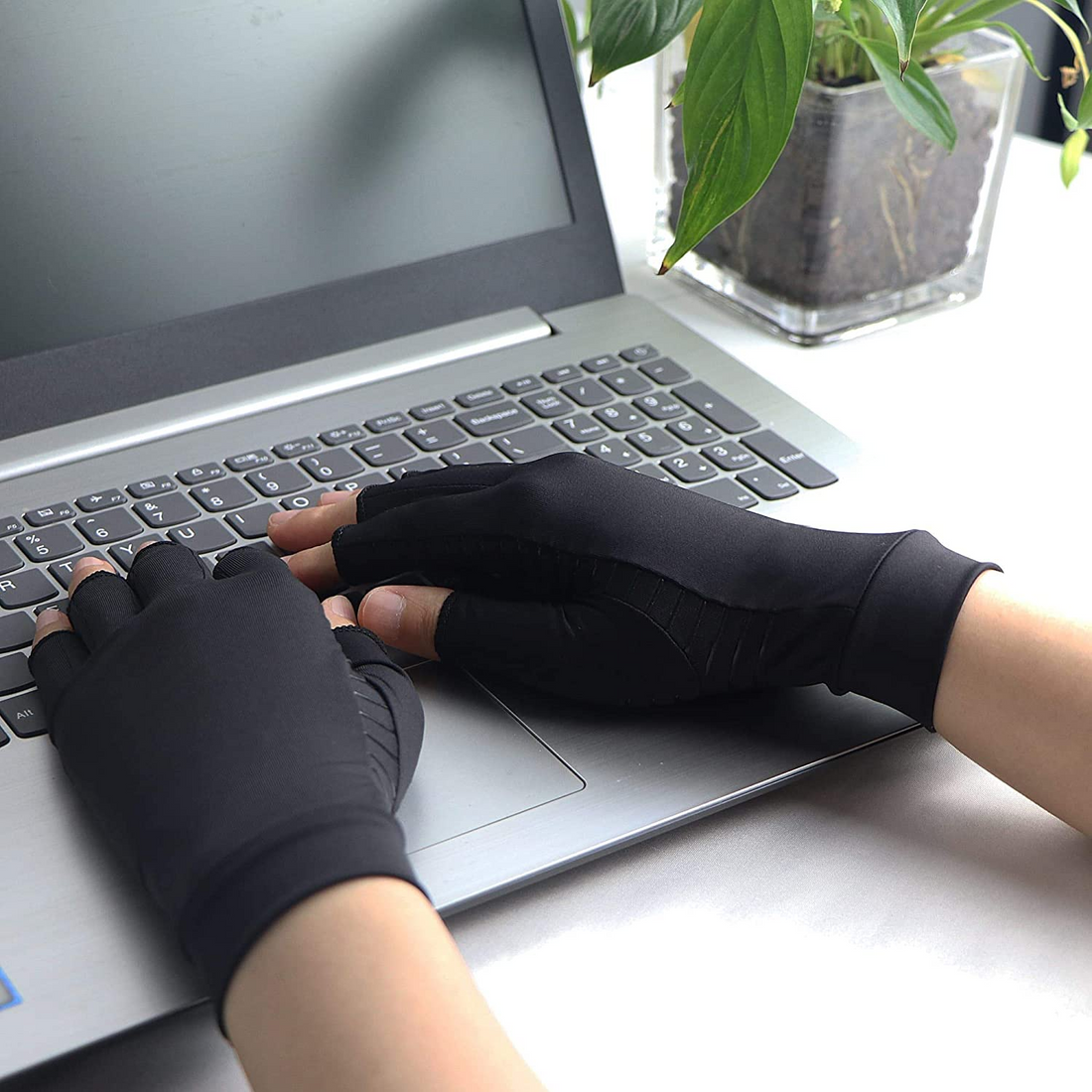
How We Choose the Best Arthritis Gloves
Share
Many people with arthritis choose to wear compression gloves to relieve swelling and pain from arthritis, but choosing a good compression gloves is very important.
What to Look for in Arthritis Gloves
comfortable
What is comfortable for one person may not be comfortable for others. Ideally, you should be able to put on a pair of compression gloves and forget you're wearing them: that's the real sign of comfort. Make sure the gloves are not too tight or too loose, and that no part of the compression gloves pinches or pierces your skin when you put them on. You have to be careful with compression gloves that are too tight. You do want to have adequate blood circulation, not hinder the blood circulation in your fingers,
It's important to remember that the fit of the compression gloves can change from day to day due to swelling in the hands and joints. Gloves that fit yesterday may not fit today, and if the glove is too tight, most people can feel it. Your hands may get cold and tingle. It can be as painful as a shoe that is too small.

coverage
Compression gloves are available for all different levels of coverage: full hand and wrist, fingers only, wrist only, hand and fingers, and no fingers. Make sure to choose gloves that will support your arthritic hand and address your type of arthritis. If someone suffers from Raynaud's phenomenon, I personally like gloves where all fingers are wrapped in one heated glove, the wrapped individual fingers don't get full heat compared to wearing the full glove and the fingers are all together.
Ultimately, though, it's up to the individual to decide which coverage makes more sense for their personal life and symptoms. Your activity level during the day affects coverage decisions. For daytime use, expect the fingertips to be free, but covered, and for nighttime use, the entire hand should be covered.
Material
Certain fabrics and materials will be more comfortable for you than others. If you're prone to running hot, you may want to opt for breathable fabrics -- but if your hands are always cold and trigger your pain, warm options are a better option. Heavier compression gloves are more warm, which can be comfortable but may make it difficult for your fingers to move. They are often worn at night, and lighter fabrics are usually easier to wear during the day, so you can use your hands. The lightweight fabric will also give the glove more flexibility, making it easy to put on and take off.
Copper is found in many garments and is claimed to be better at helping arthritis. There's no evidence copper helps, but gloves are a good one, and they're reasonably priced, so we recommend using it.
Allergies are an important consideration when choosing compression gloves. You may have an allergic reaction to products in gloves, especially latex or rubber-related products. Also, depending on the breathability of the material, it's also important to give your hands a break from wearing gloves if sweat builds up.
new features
Arthritis gloves have a variety of therapeutic features that address symptoms that people may experience every day. Heated gloves are one of the more important features, as they relieve stiffness and joint pain. For rheumatoid arthritis and osteoarthritis, the heat in the compression gloves provides and improves joint circulation and reduces stiffness. But it's important to note that while heat will temporarily relieve joint stiffness, this, like other treatments, will not reverse the disease.
Compression is another function that can work well for temporary relief of symptoms associated with arthritis of the hands and fingers. Most of the patients I see have wear and tear from osteoarthritis and their joints are swollen and painful. Gloves can really help you by putting some pressure on your hands and joints, which will suppress pain
Other features, such as copper in the gloves and increased vibration, have a different science behind them than heat and pressure therapy. All of this is based on pseudoscience, they don't hurt you, they don't cause damage, but the science behind these things is not as strong as the science we see with the drugs used to treat these diseases.










